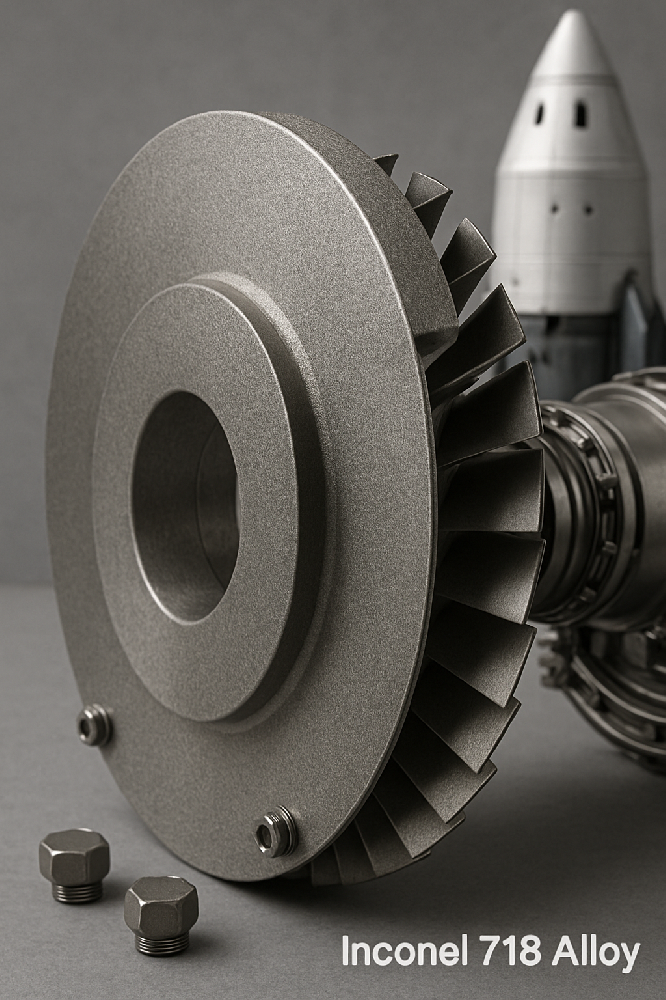Inconel718 Alloy
Inconel718 Alloy
Basic Information
Name: Inconel718, also known as Alloy 718
Similar Designations:
GH4169, GH169 (China)
NC19FeNb (France)
NiCr19Fe19Nb5, Mo3 (Germany)
NA51 (UK)
UNS NO7718 (USA)
NiCr19Nb5Mo3 (ISO)
Chemical Composition
Nickel (Ni): 50%-55%, serving as the matrix of the alloy, providing excellent high-temperature toughness and oxidation resistance.
Chromium (Cr): 17%-21%, forms a dense chromium oxide layer on the surface, enhancing high-temperature oxidation resistance.
Iron (Fe): Used to optimize cost and overall performance.
Niobium (Nb): 4.75%-5.5%, combines with titanium to form the γ'' strengthening phase, which significantly improves strength through age-hardening mechanisms.
Molybdenum (Mo): 2.8%-3.3%, enhances creep resistance and corrosion resistance in aggressive media.
Other Elements: Aluminum (Al, 0.2%-0.8%), titanium (Ti, 0.65%-1.15%), and other trace elements refine grain structure and strengthen phase formation.
Physical Properties
Density: 8.24 g/cm³
Melting Temperature Range: 1260-1320°C
Coefficient of Thermal Expansion: ~13.3×10⁻⁶/°C (average from room temperature to 1000°C).
Thermal Conductivity: ~11.4 W/(m·K) at room temperature, increasing with temperature.
Mechanical Properties
High Strength:
Room temperature: Tensile strength up to 1370 MPa, yield strength of 1030 MPa.
At 650°C: Tensile strength remains at 1100 MPa, yield strength at 890 MPa.
Good Toughness:
Elongation of 12% at room temperature, increasing to 15% at high temperatures.
Exhibits excellent impact resistance and deformation tolerance.
Fatigue Resistance: Resists crack initiation and propagation under cyclic loading, making it suitable for components subjected to repeated stress.
Creep Resistance: Maintains dimensional stability under prolonged high-temperature and high-stress conditions.
Processing & Heat Treatment
Machinability:
Can be forged, rolled, and machined, but work-hardening requires appropriate tooling and techniques.
Heat Treatment:
Solution Treatment: Produces a uniform austenitic structure, improving workability.
Precipitation Hardening (Aging): Enhances hardness and strength by precipitating strengthening phases.
Corrosion Resistance
Pitting & Crevice Corrosion Resistance: Highly resistant to chloride-containing environments.
Stress Corrosion Cracking (SCC) Resistance: Performs well under tensile stress in corrosive media.
Oxidation Resistance: High chromium content forms a protective oxide layer, preventing further degradation in high-temperature oxidizing environments.
Applications
Aerospace: Turbine disks, blades, fasteners in jet engines; structural and propulsion components in spacecraft.
Energy Sector: Gas turbines, liquid-fueled rockets, cryogenic and nuclear engineering components (e.g., reactor structures, piping, and valves).


